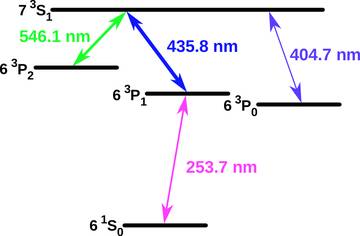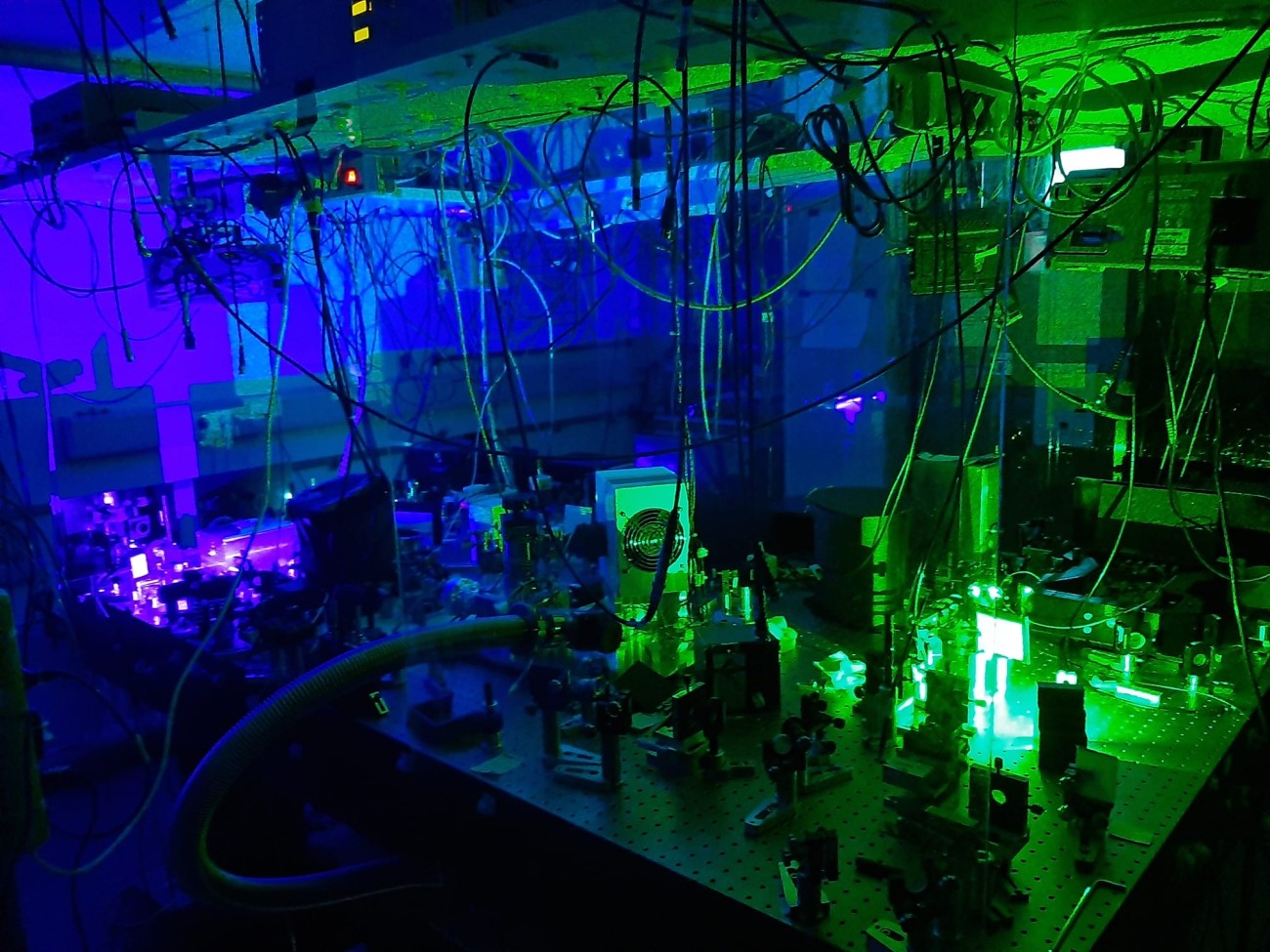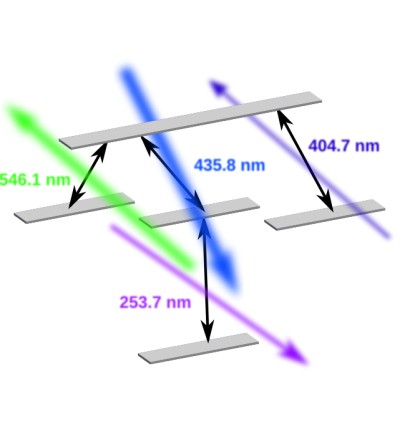
The principle of LWI is to cancel the absorption at the laser transition by coherent excitation of adjacent transitions so that only a few excited atoms are sufficient for lasing. Whilst there is no more absorption for coherent light, the laser transition can still be pumped by an incoherent light source like a gas discharge lamp.
Until now there has been no LWI scheme where the laser transition had a significantly shorter wavelength than the lasers used to build up the coherence. In our experiment, we use mercury to achieve LWI since there is potential for a wavelength gain.
In our LWI experiment, we use a 4-level-scheme in mercury with a laser transition at 253.7 nm as described in [1]. For this scheme a strong driving laser at 435.8 nm, a weak driving laser at 546.1 nm and an incoherent repump at 404.7 nm are required.
Because of the 4-level scheme it is possible to cancel the Doppler effect through a proper geometric orientation of the laser beams and prevent the LWI gain spike from being washed out.
The thickness of the mercury gas cell in which the LWI process take place must be fitted to the overlapping region of the two driving-laser beams and will be about 2 mm for a beam diameter of the lasers of 2 mm.
References
|
1) E. S. Fry, X. Li, D. Nikonov, G. G. Padmabandu, M. O. Scully, A. V. Smith, F. K. Tittel, C. Wang, S. R. Wilkinson, and S.-Y. Zhu Atomic coherence effects within the sodium d1 line: Lasing without inversion via population trapping Phys. Rev. Lett. 70, 3235–3238 (1993). |
|
2) A. S. Zibrov, M. D. Lukin, D. E. Nikonov, L. Hollberg, M. O. Scully, V. L. Velichansky, and H. G. Robinson, Experimental demonstration of laser oscillation without population inversion via quantum interference in rb Phys. Rev. Lett. 75, 1499–1502 (1995). |
|
3) E. S. Fry, M. D. Lukin, T. Walther, and G. R. Welch Four-level atomic coherence and cw vuv lasers Optics Communications 179, 499 – 504 (2000). |
|
4) T. Führer, D. Stang, and T. Walther, Actively controlled tuning of an external cavity diode laser by polarization spectroscopy Opt. Express 17, 4991–4996 (2009). |
|
5) Daniel Preißler, Noah Eizenhöfer, Jens Gumm and Thomas Walther On identifying critical parameters in an amplification without inversion setup in mercury J. Phys. B: At. Mol. Opt. Phys. 55 244001 (2022) |











